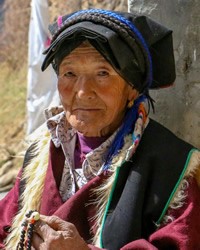Tibetan, Central in China

Photo Source:
szyj351 - Pixabay
|
Send Joshua Project a map of this people group.
|
| People Name: | Tibetan, Central |
| Country: | China |
| 10/40 Window: | Yes |
| Population: | 933,000 |
| World Population: | 1,104,400 |
| Primary Language: | Tibetan, Central |
| Primary Religion: | Buddhism |
| Christian Adherents: | 0.04 % |
| Evangelicals: | 0.03 % |
| Scripture: | Complete Bible |
| Ministry Resources: | Yes |
| Jesus Film: | Yes |
| Audio Recordings: | Yes |
| People Cluster: | Tibetan |
| Affinity Bloc: | Tibetan-Himalayan Peoples |
| Progress Level: |
|
Introduction / History
Nomadic tribes roamed Tibet as early as the second century before Christ. The clans of Tibet were united around the year 600, and the ancient Tibetan Bon religion (a mixture of magic, divination, demon worship and sacrifices) was blended with Buddhist teachings.
What Are Their Lives Like?
Central Tibetans are often farmers or livestock herders. Despite opposition from the Chinese government, many work for the Buddhist temples.
What Are Their Beliefs?
Tibetan Buddhism is the life-blood of the Tibetans. The patron saint of Tibet is Chenrezig, whose image has up to 11 heads and as many as 1,000 arms.
What Are Their Needs?
Tibet has long been one of the greatest challenges for Christianity. There are no breakthroughs that are strong enough to bring many Tibetans to the throne of grace.
Prayer Points
Pray for workers needed to sow God's word into Tibetan families, healing and strengthening households with God's blessings.
There are one or two small Tibetan fellowships in Lhasa. Pray for these believers to grow and become mature disciples of Christ, and to pray persistently for their Tibetan friends.
Pray for Tibetan Buddhists to increasingly hunger to know a personal God; one who loves them and who has sent his son to die for their sin.
Pray these Buddhists would feel the reality of sin and seek the only savior.